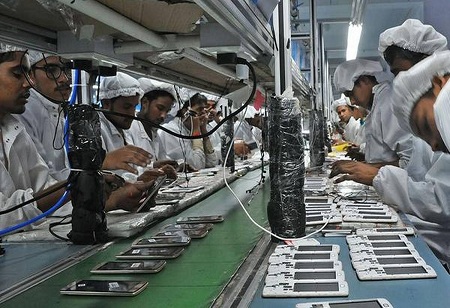In the rapidly changing electronics world, the Tata mobile phone has now become a name to reckon with, a buzz among the corporate observers, and even among the end users. Tata is reputable for steel, cars, telecoms, and tech, and many people wonder when – and how – the business will enter the mobile phone market. In this article, we share all there is to know about Tata mobile phones, from Tata’s history in telecom to potential partnerships, consumer expectations, features, and more.
The Legacy of Tata in Technology
Before we check out Tata mobile phones, let’s delve into the history of the Tata group. Tata, one of India’s oldest and most trusted conglomerates, has interests in the steel, automobiles (Tata Motors), information technology (Tata Consultancy Services – TCS), hospitality (Taj Hotels), and telecommunications (Tata Communications and Tata Tele Business Services) sectors.
Take the Tata Group, for instance, whose heritage has always been that of an innovator; be it around manufacturing India’s first indigenous car, the Tata Indica, or pioneering global IT services through TCS. So with that kind of track record, a mere mention of Tata and mobile phones brings a huge smile to customers’ faces and gets buzz going in the market.
Tata and the Mobile Industry: A Background

Although Tata mobile phones aren’t as common a phrase today as iPhone or Samsung Galaxy, Tata has had significant involvement in the mobile and telecom ecosystem:
- Tata Indicom – In the early 2000s, Tata Indicom was one of India’s leading CDMA mobile service providers. Many people still remember using their first mobile number starting with the Tata Indicom brand.
- Tata Docomo – A joint venture between Tata Teleservices and Japan’s NTT Docomo, it became hugely popular with young Indians because of its low calling rates and innovative per-second billing plans. Though eventually merged with Bharti Airtel, Tata Docomo revolutionized the affordability of mobile services.
- Tata Communications – One of the world’s largest wholesale telecom service providers, Tata Communications plays a key role in providing network infrastructure, cloud services, and global connectivity.
From these points, it’s clear that Tata already has a strong foundation in the telecom and technology space. So, the natural question arises: what about Tata mobile phones themselves?
The Concept of Tata Mobile Phone
While Tata has not yet launched a flagship smartphone brand like Apple or Samsung, the phrase Tata mobile phone often refers to two aspects:
- Speculated Tata-branded smartphones – With India’s booming smartphone market, many analysts believe Tata could leverage its brand trust and TCS’s software expertise to launch budget-friendly or even premium smartphones.
- Tata’s involvement in 5G-enabled devices – Tata Group has been actively working in 5G network solutions and semiconductor manufacturing. This raises the possibility that in the near future, Tata could collaborate with existing smartphone manufacturers or develop its own Tata mobile phones optimized for Indian consumers.
Why Tata Mobile Phone Could Be a Game-Changer
If Tata does decide to officially launch Tata mobile phones, it could shake the industry in several ways:
1. Affordability
Tata has always focused on delivering value-for-money products. Think of the Tata Nano in automobiles — the world’s cheapest car. Similarly, a Tata mobile phone could cater to India’s huge budget-conscious population without compromising on features.
2. Trust and Brand Reputation
Indians have a deep trust in Tata products. A Tata mobile phone would immediately have an edge over lesser-known brands simply because of the Tata name.
3. Integration with Tata Ecosystem
From Tata Play (DTH) to Tata Neu (digital super-app), a Tata mobile phone could be seamlessly integrated with Tata’s digital ecosystem, giving users access to entertainment, payments, shopping, and services in one device.
4. 5G and Technology Backing
With Tata Consultancy Services (TCS) working in 5G and digital transformation, Tata has the technical muscle to introduce feature-packed mobile phones with cutting-edge connectivity.
Features Consumers Expect in Tata Mobile Phones
Should Tata launch its own smartphones, here are the features Indian consumers would likely look forward to:
- Affordable price range (₹7,000 – ₹15,000 for mass adoption).
- Strong battery life (5000mAh or more, considering Indian usage).
- 5G support for future-proofing.
- Stock Android OS with minimal bloatware, ensuring smooth performance.
- AI-powered cameras to compete with Chinese brands like Xiaomi and Realme.
- Integration with Tata Neu App for payments, shopping, and rewards.
- Durability and after-sales support backed by Tata’s service reputation.
Comparison Table: Tata Mobile Phone Concept vs Existing Brands
Here’s a table comparing how a potential Tata mobile phone could stand against existing budget smartphone leaders in India:
| Feature/Aspect | Tata Mobile Phone (Concept) | Xiaomi/Redmi | Samsung Galaxy M Series | Realme/Narzo |
| Price Range | ₹7,000 – ₹15,000 (expected) | ₹8,000 – ₹20,000 | ₹9,000 – ₹18,000 | ₹8,000 – ₹18,000 |
| Battery Life | 5000mAh+ | 5000mAh+ | 5000mAh+ | 5000mAh+ |
| 5G Support | Yes (expected) | Yes (mid-range) | Yes | Yes |
| Software | Stock Android (likely) | MIUI (custom) | One UI (custom) | Realme UI |
| Ecosystem Integration | Tata Neu, Tata Play, TCS | Limited | Samsung Apps | Limited |
| Brand Trust | Very High (Tata legacy) | Medium | High | Medium |
This comparison shows that Tata could position its phones as affordable yet trustworthy alternatives, bridging the gap between budget pricing and brand reliability.
The Role of Tata Neu and Tata Digital

One of the strongest reasons to consider buying a Tata mobile phone today is Tata’s new ambitious digital push. Tata Neu, the company’s app that does it all, includes shopping, payments, health care and rewards. If the company then had the Indian version of Apple Pay, iCloud and Apple Music (and toss in cheap iPhones and the rest of its ecosystem of hardware), it could bake in a user experience where Tata Neu is always a tap away for use.
Marriage between these companies’ data-intelligence layers could lead to richer interactions for Tata Digital, and to less-abrasive, value-extracting mobile experiences for consumers.
Challenges Tata May Face in the Mobile Market
Even though a Tata mobile phone has potential, there are challenges Tata must address:
- Highly competitive market: Xiaomi, Samsung, Realme, Oppo, and Vivo dominate India’s smartphone space.
- Supply chain and semiconductor issues: Smartphone manufacturing relies on strong global supply chains, something Tata is only beginning to establish with its semiconductor ambitions.
- Consumer loyalty: Many young buyers are already tied to ecosystems like MIUI or One UI. Tata would need to offer compelling reasons for them to switch.
- After-sales support: Mobile phones require large-scale service networks. Tata would need to expand or partner with service providers quickly.
Read Also: Sreenath K Ias Biography
Future Outlook: Will We See a Tata Mobile Phone Soon?
At present, Tata has not officially announced a Tata mobile phone brand. However, the company has shown strong interest in entering the electronics and semiconductor sector, along with building a stronger digital ecosystem.
Analysts believe that Tata might either:
- Launch its own mobile phone brand in the budget and mid-range segments, or
- Partner with existing smartphone makers to release co-branded phones optimized for Tata apps and services.
Either way, the Tata name in the smartphone industry would likely generate massive interest and reshape consumer trust in Indian-made mobile phones.
FAQs on Tata Mobile Phone
Q1. Does Tata currently manufacture mobile phones?
At the moment, Tata does not have an active mobile phone brand. However, given Tata’s presence in telecom, semiconductors, and digital platforms, the possibility remains strong in the future.
Q2. What was Tata’s role in mobile services earlier?
Tata launched Tata Indicom and later Tata Docomo, which revolutionized mobile calling rates in India. These services are now part of Airtel.
Q3. What features can we expect in a Tata mobile phone?
Expected features include 5G support, affordable pricing, stock Android OS, strong battery life, and integration with Tata’s digital services like Tata Neu.
Q4. Will Tata mobile phones be affordable?
Yes. Based on Tata’s history of delivering value-for-money products, it’s expected that Tata mobile phones would target the budget and mid-range segments.
Q5. How would Tata mobile phones compete with Xiaomi and Samsung?
Tata’s main strengths would be its trusted brand name, integration with Tata services, and affordability. Competing on ecosystem benefits and long-term reliability could help Tata stand out.
Conclusion
The prospect of a Tata mobile phone has sparked the imagination of consumers and industry experts. With the trust of TATA, innovative TATA products can create waves in India as a TATA smartphone would have a combination of trust, affordability and features.” Through either making its own handsets, or via key partnerships with manufacturers elsewhere, Tata could break into the handset market and bring thoroughly decent, cheap, well integrated devices to consumers with an appetite for digital services which is growing rapidly.
Until there is an official word, the idea of Tata mobile phones is an exciting prospect, because it has the potential to change the way Indians look at homegrown smartphone brands.

